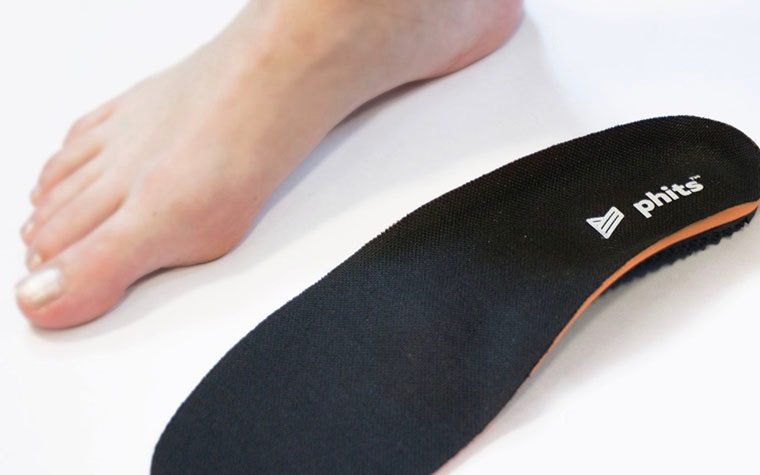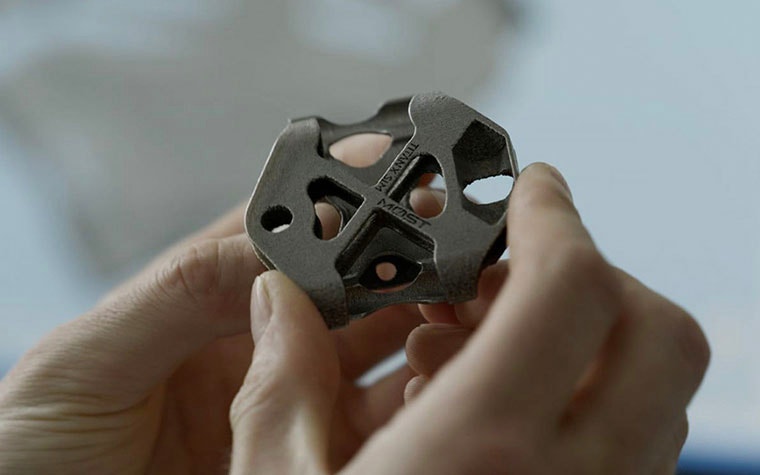EXPERT INSIGHT
Here, There, Everywhere: How 3D Printing Is Transforming the World of Sports

For more than 30 years, Materialise has used 3D printing to transform manufacturing in industries like aerospace, medical, and automotive. Now, the world of sports is beginning to experience the benefits of personalization like never before, all thanks to additive manufacturing (AM).
When Fried Vancraen, Founder and CEO of Materialise, first encountered 3D printing more than three decades ago, his mind immediately went into overdrive. The possibilities seemed endless, particularly when he began to consider the potential of personalization. Fast forward to today, and efforts to realize that potential are well underway around the world.
“We call it the slow revolution. Slowly but surely, it’s walking into all areas of sports and consumer goods, you name it,” explains Bryan Crutchfield, Vice President and General Manager at Materialise, speaking in an interview with ESPN.
Like Fried, Bryan believes the benefits of 3D printing speak for themselves, and it is only a matter of time until others see them, too. The degrees of freedom that traditional manufacturing techniques simply cannot compete with are all too compelling: complex shapes, objects within objects, and the ability to democratize personalization like never before. Used correctly, additive manufacturing has the potential to turn markets upside down and improve the quality of life for thousands of people — athletes included. In fact, it already has.
From head to toe
3D-printed wearables are a perfect example of the sweeping change that technologies like AM can bring. In the span of two years, Materialise helped to transform the market for hearing aids. Traditionally, these devices were shaped by hand, requiring several trips to the specialist for alterations before they were ready for the patient to wear. This process was time-consuming for the customer and labor-intensive for the specialist, but with 3D printing, it became unnecessary. Now, the specialist simply begins with a scan of the ear canal and uses software to design and print a hearing aid customized to fit it — a method adopted for around 99% of cases worldwide.


Similarly, the traditional process of developing and finetuning orthotic insoles had its downsides; it was time-consuming, and the insoles themselves were often heavy, clunky, or unsuitable for thinner, more fashionable shoes. Experiencing this for himself inspired Fried to consider 3D printing as an option and further embedded his belief that customization was the future.
“A picture is worth a thousand words. A 3D model is worth a thousand pictures.”
A step towards personalization
In the case of phits™, that customization goes beyond making sure the orthotics look and feel good. It also has the potential to play a role in injury prevention and rehabilitation. Like all great 3D-printed parts, this begins with gathering data. In this case, experts can do so through a process known as dynamic gait analysis.
Dynamic gait measurement provides more patient data than traditional methods ever could.
Unlike traditional methods, which collect only static data, dynamic gait analysis allows foot and ankle experts to record a patient’s footprint, torsion, and pressure loads over time, as well as their gait and toe-off. They can then use an algorithm to compare this data to a neutral gait and design an orthotic that is entirely unique to the individual and the corrections they need.
Foot and ankle experts can analyze each zone of their patient’s foot.
Because phits orthotics are 3D printed, these corrections can be built in through six zones which can be fine-tuned. By altering factors such as the size and density of each zone to change the deflection rates on a patient-by-patient basis, experts can help correct each individual’s gait back to neutral. Having a neutral gait is incredibly beneficial, potentially helping prevent injuries, providing comfort while on the move, and enhancing performance. For those in need of corrections, wearing phits orthotics could help.


In the footsteps of the stars
Unsurprisingly, such advancements don’t go unnoticed for long, particularly by athletes looking to optimize every inch of their performance. Sports teams such as the WNBA’s Dallas Wings have adopted the technology, using it to screen all of their athletes and provide orthotics to those who need them. Likewise, several Team GB runners in attendance at the Tokyo Olympics have their own pair of custom phits, while former champions such as Paula Radcliffe have sworn by them for years.


But while those at the top of the game may love this technology, it’s far from exclusive. It’s readily available for everyone from athletes to hobbyists and comfortable for hospitality workers or anyone else spending all day on their feet.
“What’s great is that they’re accessible to the average patient,” says Bryan. “This digital technology has created a democratization of manufacturing. There are places all over the US and Europe where they can go in and utilize the same technology as Olympic athletes.”
Injuries and rehabilitation
Like the quality of sporting equipment and wearables such as phits orthotics, recovery and rehabilitation techniques have improved over time. Serious long-term injuries like ACL tears would once have been considered career-ending, but modern techniques see athletes and hobbyists get back on their feet more often than not. With 3D printing and the growing adoption of personalized healthcare, specialists can now take treatment even further and provide tailor-made solutions for every patient.
For Koen Sonck, a champion windsurfer from Belgium, these developments couldn’t come soon enough. Despite several successful operations, a long battle with lateral compartment arthritis in his knee had put a stop to his time on the waves. Again, it was personalization that made the difference.


Starting with CT images of Koen’s leg, Materialise clinical engineers generated a 3D virtual model and surgical plan. The procedure Koen needed would have been almost impossible to envision and prepare using only 2D X-ray images, much less perform free-handed in the operating theater. To help with the planning, the team created specific surgical guides to fit Koen’s anatomy, considering the plate and instrumentation the surgeon chose to use. Three months later, he was back on the board and winning races once again.
Lightening the load of sporting equipment
Naturally, personalization isn’t the only benefit of this technology; other valuable perks are easily transferred to professional and recreational sports. Chief among these is weight reduction. After all, the challenge of maintaining strength and durability while making equipment lighter and easier to wear or carry is one manufacturers have always faced. For Pinarello, 3D printing was a clear solution.
“The challenge for Pinarello R&D was really to focus on weight reduction,” explains Maurizio Bellin, Chief of Operations at Pinarello. “When cyclists are climbing and sprinting many kilometers against the wind, the lighter the bike, the faster you go. This is why we aimed for the minimum possible weight.”
In this case, the Materialise team created parts that were 42.5% lighter and could be successfully printed at scale through powder bed fusion at the Metal Competence Center in Bremen, Germany. While the printed parts were small — seat clamps, to be precise — it’s a clear example of this technology’s potential in situations where every little helps.


What next for 3D printing?
As far as Bryan is concerned, these examples are merely the tip of an ever-expanding iceberg, and the future of 3D printing is incredibly bright. Whether it’s science, technology, engineering, art, or math, moving from working with 2D to 3D can only bring long-term benefits.
“A picture is worth a thousand words. A 3D model is worth a thousand pictures. It brings more depth, the ability to see the nuance and what’s going on, to hold it in your hand, look at it, spin it around, and think of alternative approaches in treatment,” adds Bryan.
“You have to learn to train your mind to think in three dimensions. As you’re thinking about this technology and hold those models in your hand, it really opens up a new world of solutions in all sorts of industries.”
Adopting this way of thinking has certainly helped phits orthotics make a splash in the world of sports. What comes next remains to be seen, but if handled correctly, it’s sure to become something of a home run.
Share on:
You might also like
Never miss a story like this. Get curated content delivered straight to your inbox.
